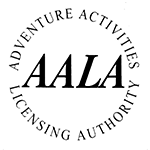What kit list do I need for Winter Hillwalking in Scotland?
There’s lots of ways you can spend lots of money on an endless journey of buying more and more winter hillwalking equipment and kit. In fact, it doesn’t have to be crazy expensive, and its something you can build up over time.
Perhaps to start with you can borrow waterproofs from friends and do a little searching on eBay and Gumtree for some quality second hand clothing and equipment.
When it does come to getting your wallet out and investing in your own kit we would say, buy once and buy well. Think about investing in a high-quality brand such as Patagonia who guarantee everything they make for life and have the highest possible ethical and sustainable standards.
Invest in quality and it will serve you well for many seasons. And remember, dressing for winter hillwalking is all about layering light weight [mostly] synthetics. Being able to regulate your heat through the day is important.
So, let’s start with the outer most layer, known as the shell. This is your ultimate line of defence against snow, blizzards, spindrift, ice, wind, sleet, and rain. And quite possible all before lunchtime. You will need:
Waterproof jacket with hood.
Go for some form of Gore-Tex or equivalent shell. A hood is super important too, or the elements will just pour in around your neck. Make sure the cuffs are wide with Velcro fastenings. This allows you to easily pull the cuffs over your gloves, and then seal with the Velcro.
Choose a bright colour too. If something goes wrong, the Mountain Rescue won’t thank you for wearing a camouflage jacket. Make sure you can be seen in an emergency.
Waterproof trousers.
Again, go for Gore-Tex or equivalent. We would also recommend you choose a pair with suspenders / braces over your shoulders. This keeps them firmly up, and in place. Spending a day in spindrift and wading through deep snow, constantly pulling your trousers up gets a little irritating. Go for bright colours again.
Gloves and hats.
Bring two pairs of insulated waterproof gloves and two woollen or synthetic close-fitting hats. The wind in the Scottish mountains must have claimed thousands of unsuspecting gloves and hats over the years. Spares are essential.
Gaiters.
These are not for everyone but pack a pair. If you end up wading through deep snow for prolonged periods of time, they can save wet and cold feet.
Winter mountaineering Boots.
This deserves its own section! [Or even its own blog] So more on this later.
Goggles.
Yup that’s correct, goggles, the sort you might wear skiing. Make no mistake if you are at 3000 feet with 50mph gusts of spindrift, and trying to navigate, you will be mighty glad for a pair of goggles!
Now, let’s look at what we need under that outer most protective shell layer.
Insulated windproof jacket.
If it isn’t wet, you probably won’t have your outer waterproof shell on, so an insulated windproof jacket is a key item of kit.
There’s a couple of schools of thought here; synthetic insulation, or down? Down is in theory warmer, lighter and packs smaller. However good modern synthetics are not far behind. Check out this one from Norwegian brand Norrona, it’s a real favourite of ours: Norrona Insulated Jacket
However, the deal breaker for us in Scotland is the weather. Scotland can be wet, very wet. And when down gets wet it stays wet and looses 90% of its insulation properties, so we always go with a quality synthetic insulated jacket.
If possible, we would also recommend you pack a spare. This isn’t because you might lose your favourite synthetic jacket: It’s for emergencies. If you, or a member of your team is injured, or must stay static up on the mountain for an unplanned reason, an extra insulated jacket could be what makes the ultimate difference.
Synthetic softshell trousers.
The key is for these to be synthetic, and never cotton. Cotton is restrictive, heavy weight and will not dry out if it gets wet. [As a rule, don’t wear any cotton items].
We would also suggest you avoid ski trousers. These tend to be pretty restrictive and heavy weight and are designed to keep you warm sitting unactive on a chair lift. You will soon overheat.
Lightweight fleece.
These are great for under your jacket. Warm, but not too warm and lightweight. There is of course endless types of fleece jackets and tops from casual to technical. Patagonia are the master here, check some of these out: Patagonia Fleece
Gillet / vest.
This isn’t 100% necessary, but an insulated or fleece gillet / vest can be a super functional clothing item in the mountains. They keep the core warm and allow for lots of movement and ventilation when the terrain gets steep. Great for throwing on and off, and regulating your heat.
Tech tee / merino tee / base layer.
This is your next to skin inner base layer. Synthetic and merino are both great at wicking. Its just down to personal choice. But again, don’t wear cotton!
Underwear.
Yup these matters. Keep it synthetic and form fitting. An 8-hour day of chaffing isn’t much fun. Seriously.
Socks.
A good quality wool hiking sock – long length so they don’t slide down into your boots.
That’s a good overview of the sort of clothing you will need for winter mountaineering in Scotland. Now, let’s have a look at some of the technical kit you should have in, or attached to your rucksack. [And more on the rucksack later].
Ice axe.
This is an essential item of technical kit for hillwalking and mountaineering in the winter in Scotland. Like most technical kit, if you don’t know how to use it, it could be more of a hazard than a benefit.
If you are new to winter hillwalking and ice axes, you should ask the experienced member of your team the basics of using an ice axe. And make sure you ask in a safe place before you need it.
Or ideally take part in a winter hillwalking course where you will learn the proper and safe techniques with an ice axe. This is a great way to better prepare yourself, and its fun too. You can see course details here: Winter Hillwalking Experience
Crampons.
Again, an essential item of winter hillwalking equipment, and as a beginner far more complicated than an ice axe to use! Try them on at home first, in the garden away from the carpet. Put them on wearing gloves. Then seek advice from the experienced member of your team, before the going gets steep and challenging.
Make sure you get a crampon bag too. Those sharp teeth will make short work of your new Gore-Tex jacket.
Alternatively, you could join up with some likeminded friends and have an adventure on a winter mountain skills course in the Cairngorms first! Full details here: Winter Mountain Skills
Mountaineering helmet.
This is another item that has the mountaineering community divided. Some folks do, some folks don’t. Here is a question: If your kids were on steep rocky terrain, partly under ice and snow in treacherous conditions, would you want them to wear a helmet? The answer is almost certainly yes – so why wouldn’t you wear one too?
With all this chat around clothing and kit, we are going to need somewhere to put it and carry it onto the mountain: now we get onto the all-important rucksack!
Rucksack.
Rucksacks come in all shapes, sizes, and styles, so let’s narrow the field down a bit for winter hillwalking in Scotland. First up size: we would recommend you go for 35 to 45 litres. This might sound big, but theses a fair amount of gear to get in there during the winter months.
Style: We preferer rucksacks specifically designed for mountaineering. These tend to be more streamline to avoid snags, and don’t have bulky external pockets and compartments.
They feature external straps and loops to attack your ice axe to and have side compression straps to compress your load. Here is a great example: Norrona Winter Hillwalking Rucksack
You should also get a waterproof liner for your rucksack. Despite all the technology out there, most rucksack are not waterproof.
What else do I need in my rucksack?
Other items you should have in your rucksack are a torch with spare batteries. Your mobile phone, well insulated inside say your spare jacket. The cold tends to kill phones pretty quickly.
Invest in a group shelter. These pack away small, and in an emergency can keep the worst of the elements off your group. An emergency whistle – six short blasts followed by a minute’s pause.
Navigation tools, such as a map [plus spare] and compass. Keep your map in a transparent waterproof envelope, open at the area you will be winter hillwalking in. if you don’t know how to navigate using a map and compass, its critical the experienced member of your group does.
We recommend taking part in a professionally led winter hillwalking day to better understand these essential skills. You can see details here: Preparing For Winter Hillwalking In Scotland
What food and drink do I need in my rucksack?
First up, have a good breakfast. Try porridge and peanut butter.
You are really looking for easily accessible high energy snacks to graze on throughout the day. Nuts and chocolate are a good start
“Stopping for lunch” isn’t really something we do when winter hillwalking and mountaineering. 30 minutes of munching on sandwiches in the cold and wind isn’t good practice. Much better to grab a mars bar when fitting crampons or checking the map. Consistent, slow, and steady wins the day.
Hydration is also critical. Take a hot flask, and a modest container for water. You can usually top this up over the day. And remember 1 litre of water weighs 1 kg, so there’s no need for a huge 5 litre water bottle.




